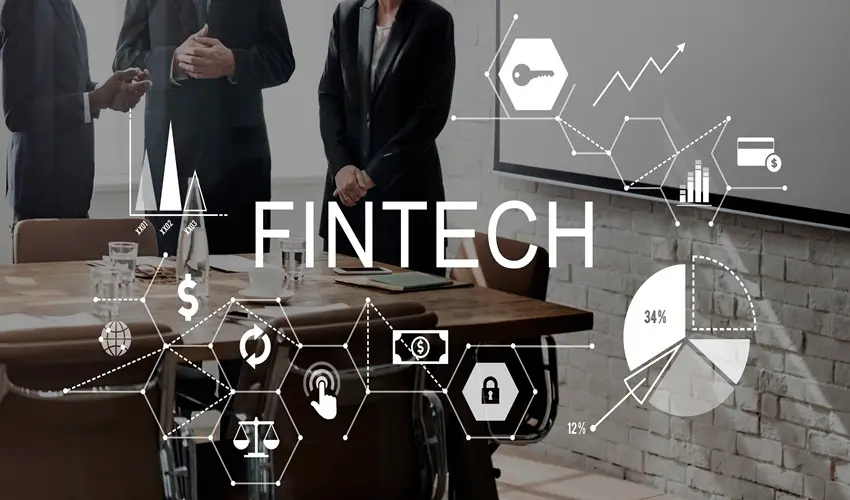
The Role of IoT in Fintech: Smarter Payments and Enhanced Security
Fintech is only one of the businesses in which the Internet of Things (IoT) is changing globally. IoT is transforming how payments are made and financial services are secured by enabling smooth financial transactions, improved security, and real-time data processing through linked devices. IoT-driven solutions are quickly being incorporated into the finance sector, improving transaction efficiency, security, and client focus.
According to Statista, the global IoT in the banking and financial services market is expected to reach $2 billion by 2026, fueled by the rise of contactless payments, biometric authentication, and AI-driven fraud detection. This blog explores how IoT is driving smarter payments and enhanced security while also addressing the challenges and future prospects of IoT in fintech.
Introduction: How IoT is Reshaping Fintech?
In an era where digital payments and cybersecurity are top priorities, IoT-powered solutions are making financial transactions faster, safer, and more intuitive. From smart point-of-sale (POS) systems to wearable payment devices and biometric authentication, IoT is helping fintech companies bridge the gap between convenience and security.
For professionals looking to stay ahead in this evolving landscape, structured learning through an IIM fintech course can provide valuable insights into IoT integration, digital banking, and financial innovation. As fintech companies embrace IoT-driven strategies, industry experts must understand how to leverage this technology for enhanced operational efficiency and risk management.
Let’s explore the key ways IoT is influencing fintech, making payments more seamless and security more robust.
IoT and Smarter Payments
A. Contactless Payments and Smart POS Systems
IoT-powered smart POS terminals are redefining the way transactions are processed. These systems offer faster payments, real-time analytics, and enhanced customer experiences.
Example: Apple Pay and Google Pay use NFC-enabled IoT devices for contactless payments, reducing dependency on physical cash and cards.
Impact: Transactions are completed in seconds, reducing checkout times and enhancing customer satisfaction.
B. Wearable Payment Devices
The rise of wearable technology has paved the way for IoT-driven payments through smartwatches, rings, and fitness trackers.
Example: Garmin and Fitbit now offer IoT-enabled payment solutions integrated with banks, allowing users to make secure transactions with a simple tap.
Impact: Wearables eliminate the need to carry wallets or cards, making payments more frictionless and accessible.
C. IoT-Enabled Smart Vending Machines
Vending machines are becoming cashless and contactless thanks to IoT-powered mobile payment integrations.
Example: Coca-Cola introduced IoT-driven vending machines that accept digital payments via smartphones and wearables.
Impact: Customers can purchase products effortlessly, reducing the dependency on physical currency.
IoT and Enhanced Security in Fintech
A. Biometric Authentication for Fraud Prevention
IoT-powered biometric authentication systems use fingerprint scanning, facial recognition, and voice authentication to prevent fraud.
Example: Mastercard’s Identity Check (Selfie Pay) uses facial recognition for authentication before processing transactions.
Impact: Biometric authentication adds an extra layer of security, reducing card fraud and unauthorized access.
B. AI-Powered Fraud Detection with IoT
IoT devices analyze real-time transactional data and use AI-driven algorithms to detect fraud patterns.
Example: Banks use IoT sensors to track device locations, flagging any suspicious transactions that don’t align with a user’s spending behavior.
Impact: Fraud detection systems powered by IoT can block unauthorized transactions instantly, minimizing cyber threats.
C. Blockchain Integration for Secure IoT Transactions
Combining IoT with blockchain technology ensures secure, immutable transactions across multiple financial platforms.
Example: HSBC and IBM are exploring blockchain-based IoT payment solutions to enhance cross-border transaction security.
Impact: The integration prevents data manipulation and ensures financial transparency.
Challenges of Implementing IoT in Fintech
Despite its advantages, IoT in fintech comes with challenges that businesses must navigate.
- Cybersecurity Risks: More connected devices mean increased vulnerabilities to cyberattacks.
- Data Privacy Concerns: Storing and processing vast amounts of customer data raises compliance and privacy issues.
- High Implementation Costs: IoT-powered fintech solutions require significant infrastructure investments.
- Regulatory Challenges: Governments and financial regulators are still catching up with IoT-driven fintech models.
To overcome these challenges, fintech professionals must develop expertise in IoT integration, cybersecurity, and compliance strategies. This is where structured learning, such as an IIM Calcutta fintech course, can help professionals understand the regulatory landscape and risk management frameworks.
The Future of IoT in Fintech
The next decade will see exponential growth in IoT-powered financial solutions, driven by advancements in 5G, AI, and blockchain. Here’s what to expect:
- Autonomous Payments: Smart IoT devices make payments automatically, eliminating human intervention.
- Voice-Activated Banking: AI-powered voice assistants handling financial transactions securely.
- IoT-Powered Smart Cities: Integrated fintech solutions for parking payments, public transport, and smart retail.
- Personalized Banking: IoT data enabling hyper-personalized financial services tailored to individual spending habits.
The convergence of IoT, AI, and blockchain will continue to shape fintech, offering seamless, secure, and intelligent financial services.
Final Words
IoT is no longer a futuristic concept—it is actively transforming digital payments and financial security. From contactless transactions and biometric authentication to AI-powered fraud detection, IoT is making FinTech more efficient, secure, and user-friendly.
However, the success of IoT in fintech depends on robust cybersecurity measures, regulatory frameworks, and continuous innovation. As fintech professionals navigate this evolving landscape, staying informed about IoT-driven solutions and emerging trends is crucial for career growth.
For those looking to expand their expertise in fintech innovations, security frameworks, and regulatory compliance, structured learning programs such as the IIM Calcutta fintech course provide a deep understanding of IoT’s role in shaping the financial industry. As we move towards a fully connected financial ecosystem, the integration of IoT in fintech will continue to revolutionize how we transact, secure, and experience financial services. The future belongs to those who embrace technology, adapt to change, and leverage IoT for smarter, safer financial solutions.